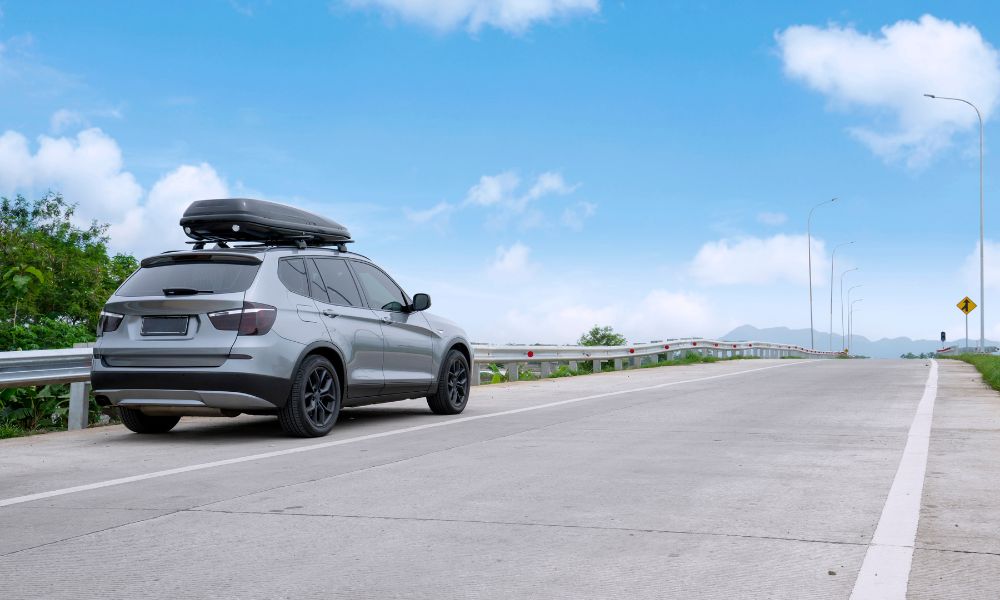If you’re an outdoor enthusiast, you know how important it is to have the right gear to make your adventures more comfortable and enjoyable. One of the essential gear items for any outdoor trip is a roof box. Roof boxes are containers you can attach to the roof of your car to store your belongings. They come in various types, sizes, and brands, offering many benefits for outdoor enthusiasts, families with children and pets, and even businesses. However, one of the most critical factors to consider when buying a roof box is its aerodynamic design and how it affects fuel efficiency.
Types of Roof Boxes and Their Aerodynamic Design
Roof boxes come in two primary types: hard shell and soft shell. Hardshell roof boxes are made of durable materials like plastic, fiberglass, or metal, offering better property protection. Softshell roof boxes are made of fabric and are lighter and more flexible.
Hard and soft shell roof boxes can have different aerodynamic designs affecting fuel efficiency. Aerodynamic design refers to the shape and features of the roof box that reduce wind resistance and drag. A well-designed roof box can reduce wind noise, improve stability, and decrease fuel consumption.
Aerodynamic Design Features
Aerodynamic roof boxes have specific features that improve their performance. These features include:
1. Sleek and Streamlined Shape
Aerodynamic roof boxes have a sleek and streamlined shape that reduces wind resistance and drag. They have a low profile, which improves stability and reduces wind noise.
2. Front-End Design
The front-end design of the roof box can have a significant impact on its aerodynamics. A roof box with a curved front end can reduce wind resistance and improve fuel efficiency.
3. Wind Deflectors
Some roof boxes come with wind deflectors that reduce wind noise and drag. Wind deflectors are usually located at the front or back of the roof box.
4. Low-Drag Hinges and Latches
The hinges and latches of a roof box can also affect its aerodynamics. Low-drag hinges and latches reduce wind resistance and drag.
5. Materials
The materials used to make the roof box can also affect its aerodynamics. Lightweight materials like fiberglass or aluminum can reduce weight and improve fuel efficiency.
Factors That Affect Fuel Efficiency
Several factors can affect the fuel efficiency of a roof box, including:
1. Weight Limit
Each roof box has a weight limit that you should not exceed. Overloading the roof box can increase wind resistance and drag, which can decrease fuel efficiency.
2. Installation
Improper installation of the roof box can also affect its fuel efficiency. A roof box that is not properly attached to the roof can increase wind resistance and drag.
3. Weather Impact
Weather conditions can also affect the fuel efficiency of the roof box. High winds or strong crosswinds can increase wind resistance and drag, which can decrease fuel efficiency.
4. Speed
The speed of the car can also affect the fuel efficiency of the roof box. Driving at high speeds can increase wind resistance and drag, which can decrease fuel efficiency.
5. Weight Distribution
The weight distribution of the roof box can also affect its fuel efficiency. Placing heavy items at the front of the roof box can increase wind resistance and drag.
Benefits of Aerodynamic Roof Boxes
Aerodynamic roof boxes offer many benefits, including:
1. Improved Fuel Efficiency
Aerodynamic roof boxes can improve fuel efficiency by reducing wind resistance and drag.
2. Better Stability
Aerodynamic roof boxes have a lower profile and improved front end design, which improves stability and reduces wind noise.
3. Securing Belongings
Roof boxes provide a secure way to transport your belongings, protecting them from the elements and potential theft.
4. More Storage Options
Roof boxes provide more storage options for your car, freeing up space inside the vehicle for passengers or other items.
5. Environmental Impact Mitigation
Using an aerodynamic roof box can also have a positive impact on the environment by reducing carbon emissions and fuel consumption.
Roof Box vs. Rack vs. Trailer
When it comes to transporting gear, you have a few options, including roof boxes, racks, and trailers. Each option has its benefits and drawbacks, and the best option for you depends on your needs and preferences.
1. Roof Box
Roof boxes are a popular choice for outdoor enthusiasts because they are easy to install and provide secure storage. They are also aerodynamically designed to improve fuel efficiency. However, they have a weight limit, and they can be challenging to load and unload.
2. Rack
Racks are another option for transporting gear. They are easy to install and can hold a variety of gear. However, they can increase wind resistance and drag, which can decrease fuel efficiency.
3. Trailer
Trailers are an option for transporting larger items like boats or RVs. They have a higher weight limit than roof boxes or racks, but they can be challenging to maneuver, and they can increase fuel consumption.
Measuring for Fit
Before buying a roof box, you need to ensure it will fit your car. Measure the length, width, and height of your car’s roof and compare them to the dimensions of the roof box. Make sure to account for any other items on your roof, like a roof rack or antenna.
Installation and Removal
Installing and removing a roof box can be challenging, especially if you do it alone. Follow the manufacturer’s instructions carefully and use the proper mounting system. When removing the roof box, clean it thoroughly and store it in a safe place.
Maintenance and Repair
To keep your roof box in good condition, clean it regularly with soap and water. If your roof box is damaged, it may be possible to repair it, but in some cases, you may need to replace it.
Accessories and Packing Tips
Consider investing in accessories like cargo nets, tie-down straps, and storage organizers to get the most out of your roof box. When packing your roof box, distribute the weight evenly and place heavier items at the bottom.
Safety Considerations
When using a roof box, follow all safety guidelines, including the weight limit and proper installation. Be aware of the increased height of your car, and make sure to avoid low-clearance areas.
Conclusion
Aerodynamic roof boxes are an essential gear item for outdoor enthusiasts and families on the go. They offer many benefits, including improved fuel efficiency, stability, and storage options. When buying a roof box, consider the aerodynamic design and how it affects fuel efficiency. Follow all safety guidelines when using a roof box, and install and maintain it properly for maximum performance.
FAQs
1. How much weight can I put in my roof box?
Each roof box has a weight limit, which you should not exceed. Overloading the roof box can decrease fuel efficiency and increase the risk of accidents.
2. Can I install a roof box myself?
Yes, you can install a roof box yourself, but follow the manufacturer’s instructions carefully and use the proper mounting system.
3. Do I need to remove the roof box when not in use?
Removing the roof box when not in use is recommended to improve fuel efficiency and reduce wind resistance. However, if you need to use it frequently, you can leave it on your car as long as it’s properly secured.
4. How do I know if a roof box will fit my car?
Measure the length, width, and height of your car’s roof and compare them to the dimensions of the roof box. Make sure to account for any other items on your roof, like a roof rack or antenna.
5. Can I use a roof box in all weather conditions?
Roof boxes are designed to withstand various weather conditions, but extreme weather like heavy rain or snow can affect their performance. Secure your belongings properly and drive carefully in challenging weather conditions.






